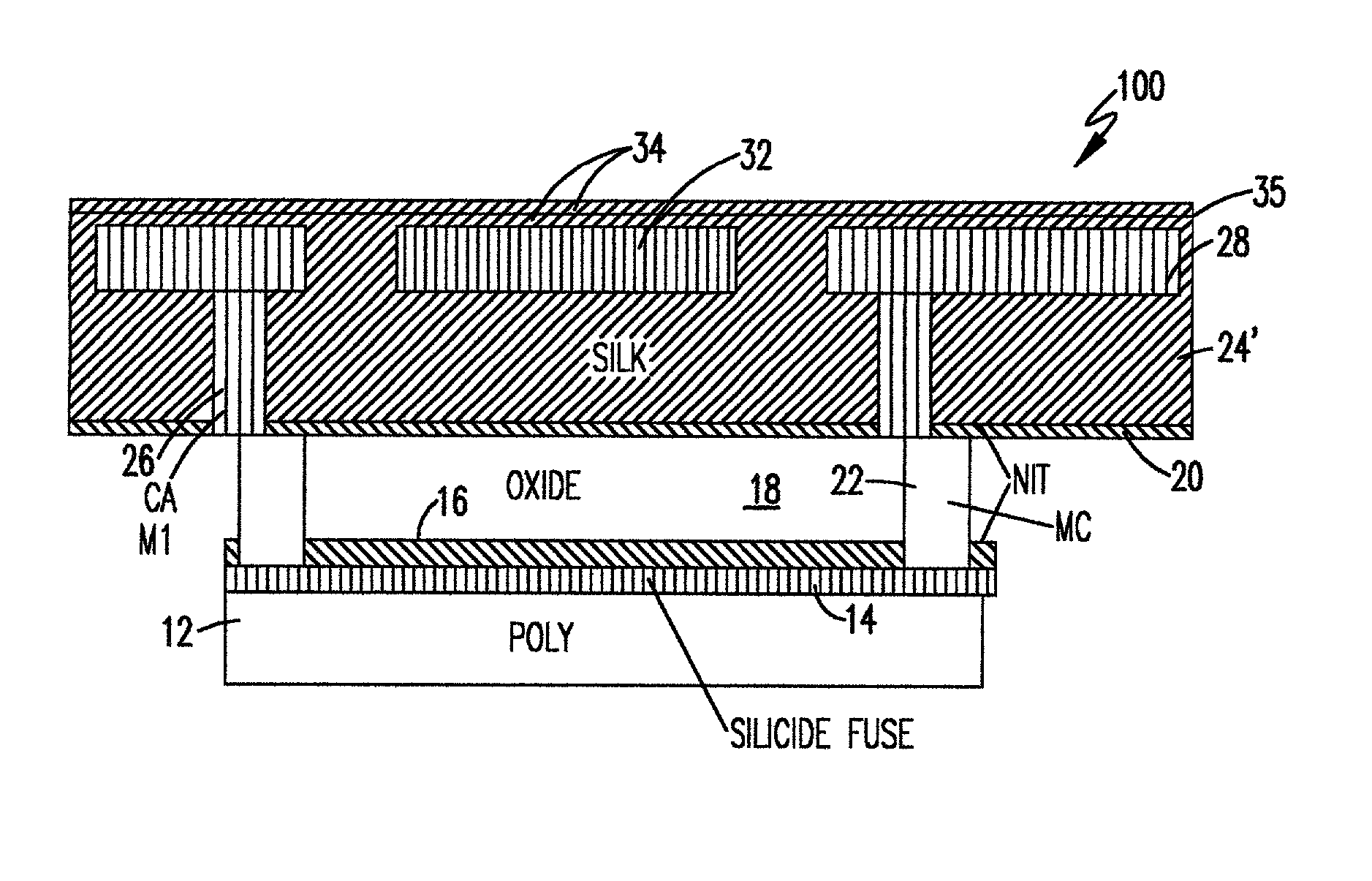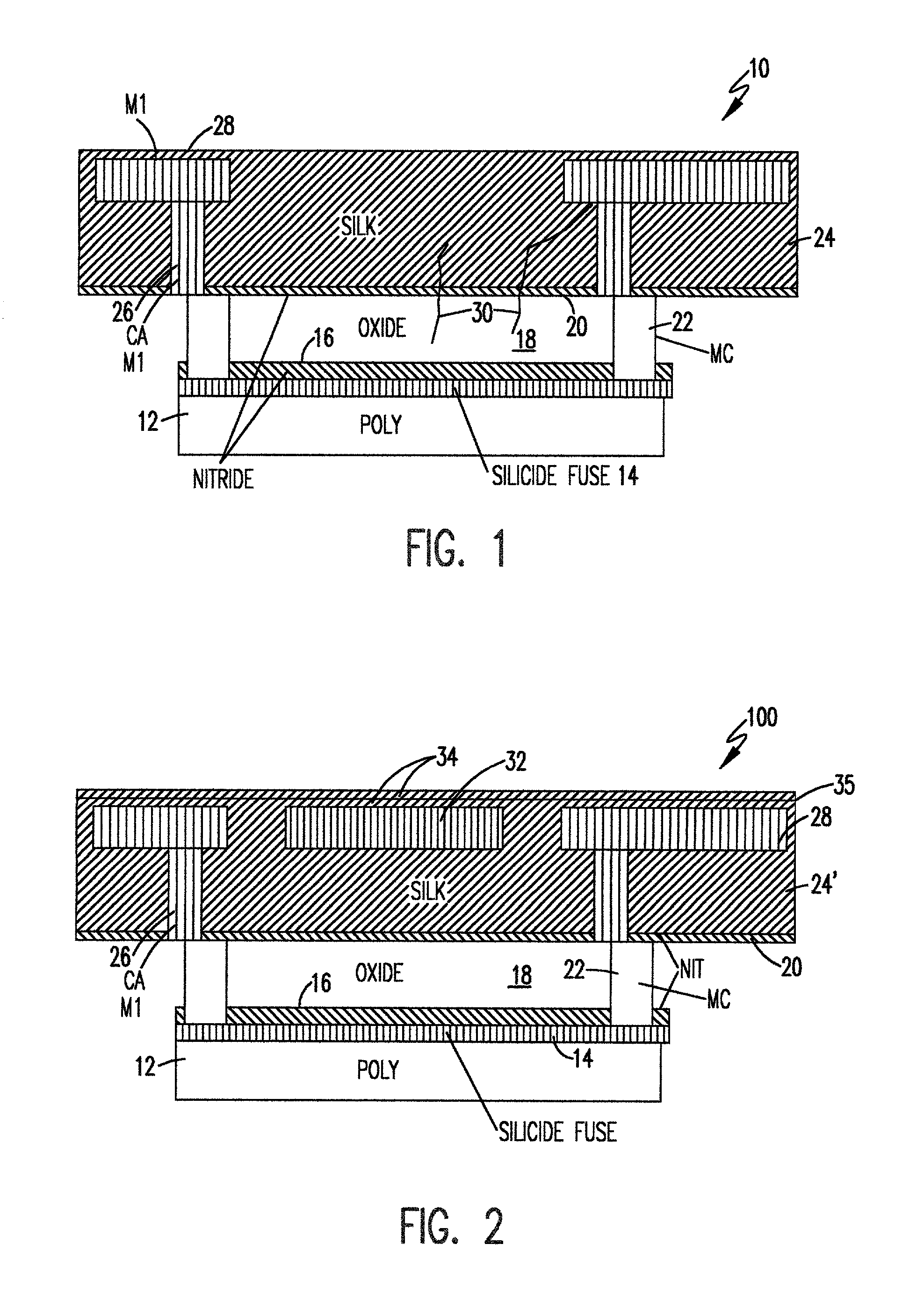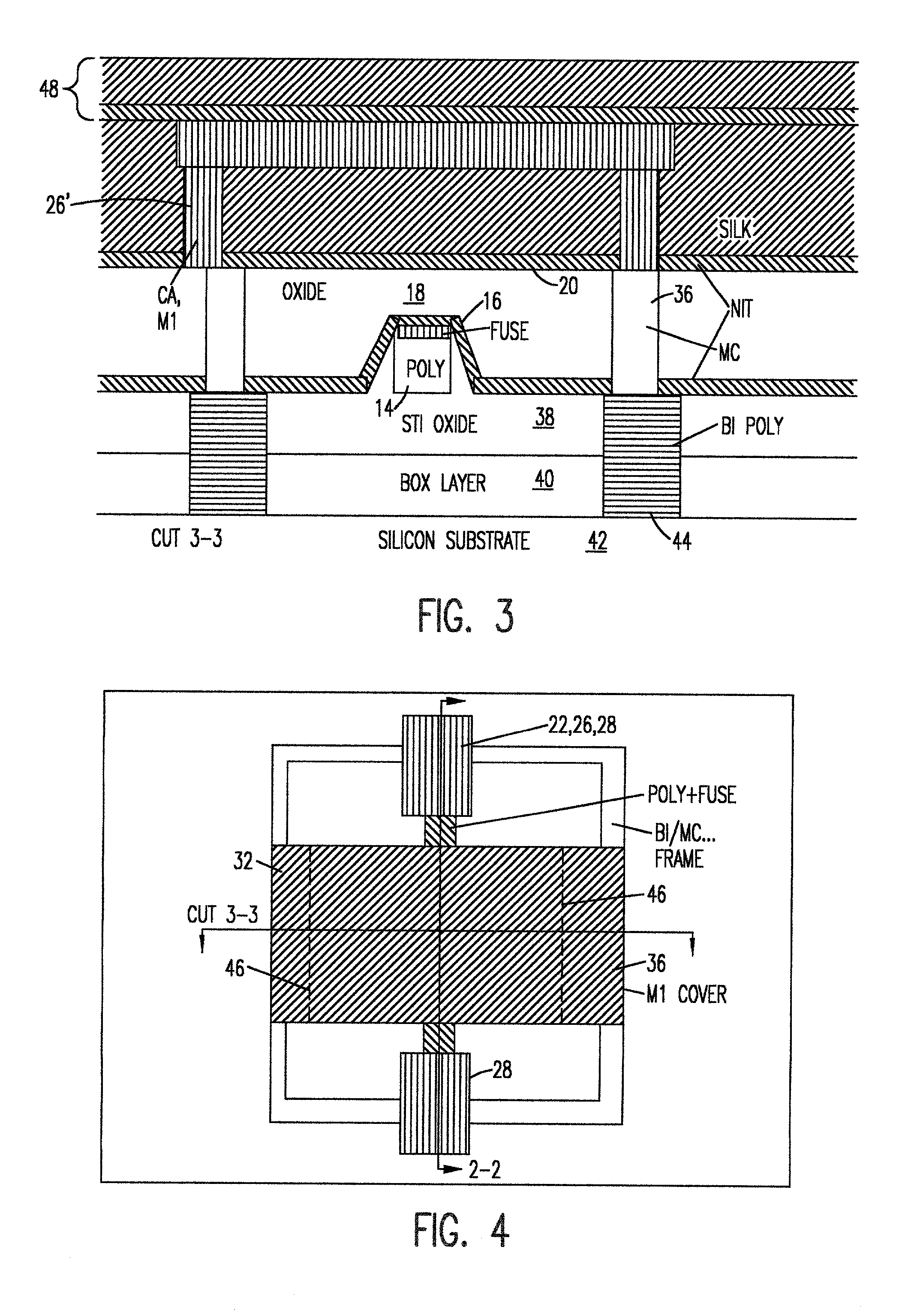Fuse structure with thermal and crack-stop protection
a technology of fuse structure and thermal crackstop protection, which is applied in the direction of semiconductor devices, semiconductor/solid-state device details, electrical apparatus, etc., can solve the problems of term reliability, performance compromise, manufacturing yield compromis
- Summary
- Abstract
- Description
- Claims
- Application Information
AI Technical Summary
Benefits of technology
Problems solved by technology
Method used
Image
Examples
Embodiment Construction
[0024] Referring now to the drawings, and more particularly to FIG. 1, there is shown, in cross-section, a fuse structure having a silicide fuse element exemplary of those in which cracking has been observed to occur. It is to be understood that while FIG. 1 does not include a structure in accordance with the invention, SiLK is shown as an exemplary low-k organic dielectric and thus is illustrative of how such a material would ordinarily be employed but for the problems noted above which are addressed by the present invention. Accordingly, no portion of FIG. 1 is admitted to be prior art with respect to the present invention. It should also be understood that the principles of the invention are applicable to other low-k organic dielectric materials other that SiLK; in regard to which the invention will be explained, below. SiLK, however, is the preferred environment and application of the invention in view of the particularly low dielectric constant, k, provided and the low temperat...
PUM
| Property | Measurement | Unit |
|---|---|---|
| temperature | aaaaa | aaaaa |
| temperature | aaaaa | aaaaa |
| thick | aaaaa | aaaaa |
Abstract
Description
Claims
Application Information
 Login to View More
Login to View More - R&D
- Intellectual Property
- Life Sciences
- Materials
- Tech Scout
- Unparalleled Data Quality
- Higher Quality Content
- 60% Fewer Hallucinations
Browse by: Latest US Patents, China's latest patents, Technical Efficacy Thesaurus, Application Domain, Technology Topic, Popular Technical Reports.
© 2025 PatSnap. All rights reserved.Legal|Privacy policy|Modern Slavery Act Transparency Statement|Sitemap|About US| Contact US: help@patsnap.com



